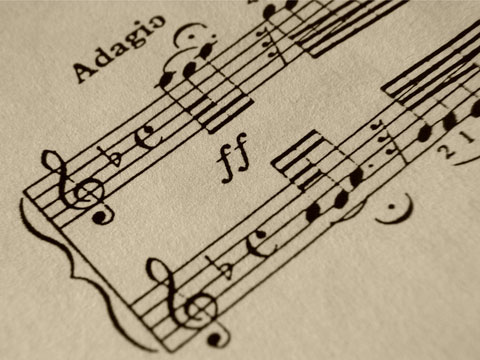Baroque Music

The Bulgarian physician Georgi Lozanov devised a language learning method called Suggestopedia.
The Suggestopedic method consists in exposing the student to an audition of pairs of items, following a certain rhythmic pattern. At the same time, instrumental baroque music in Largo tempo (60 beats per minute) is played back.
This kind of soothing, rhythmic music is intended for inducing a state of relaxed alertness on the learner. This method is supposed to improve recalling performance by at least 25%.
Why Baroque music?
Baroque “Largo” movements help the suggestopedic student to reach a certain state of relaxation, in which the receptivity is increased.
Experiments by Lozanov and his successors in both Europe and America showed that the following criteria have to be met by a music work to be useful for suggestopedic learning:
“Largo” tempo
Its tempo must be approx. 60 M.M. (60 beats/min).
Instrumental music
Voices (even choirs) and instruments standing out against the orchestra are likely to distract the student.
Ideally, the orchestra must have a neutral color (the same instruments be played throughout the work) – that is why the best choice are string orchestras.
Regular patterns
Baroque works are often made up by rhythmic and melodic variations on a theme, following a somewhat mathematical pattern.
Recommended WorksJohann Sebastian Bach (1685-1750) 6 Concerti after Vivaldi. Concerto for Harpsichord in C Major / C minor / F Major, BWV 976 / 975 / 978. Goldberg Variations, BWV 988 Concerto for Harpsichord in F minor, BWV 1056. Concerto for Flute and Strings in G Major, BWV 1056. Suite for Orchestra No. 3, BWV 1068. — “Air”. Arcangelo Corelli (1653-1713) Concerti Grossi, Opus 5. — Concerti 7, 8, 9, and 10. 12 Concerti Grossi, Opus 6. George Frederick Handel or Georg Friedrich Händel (1685-1759) 12 Concerti Grossi, Opus 6. Concerto Grosso Nr. 1 in B flat Major, Opus 3. Music for the Royal Fireworks. — Concerti No. 1 and 3. Johann Pachelbel (1653-1706) Canon in D Major. Georg Philipp Telemann (1681-1767) Concerto in G Major for Viola and String Orchestra. Antonio Vivaldi (1678-1741) 6 Flute Concerti, Opus 10. Flute Concerto Nr. 4 in G Major. The Four Seasons. -“Winter”. Concerto in C Major for Mandolin, Strings, and Harpsichord. Concerto in D Major for Guitar and Strings. Concerto in D minor for Viola d’amore, Strings, and Harpsichord. |
